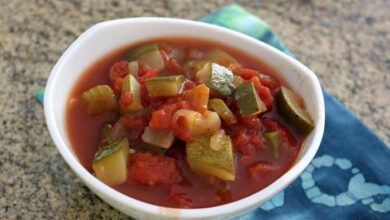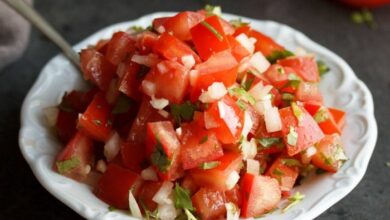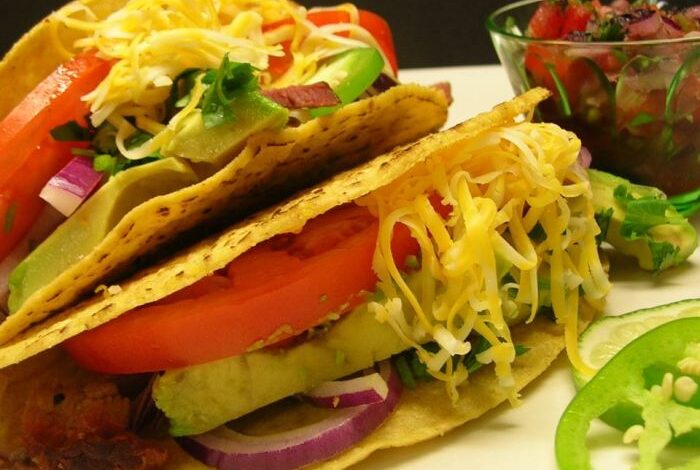
Traditional Mexican Street Tacos: A Culinary Journey
Traditional Mexican street tacos take center stage, inviting us on a culinary journey through the heart of Mexico. These humble street food staples are more than just a meal; they are a cultural experience, a celebration of flavors, and a testament to the ingenuity of Mexican cuisine.
From their humble beginnings to their modern-day popularity, street tacos have evolved alongside Mexican culture, reflecting the diverse influences and culinary traditions of the country. The aroma of sizzling meat, the vibrant colors of fresh ingredients, and the convivial atmosphere of street food vendors create an irresistible allure that draws people in from all walks of life.
History and Origins of Traditional Mexican Street Tacos
The humble street taco, a staple of Mexican cuisine and a beloved street food worldwide, has a rich and fascinating history that intertwines with the country’s cultural heritage and culinary traditions. Its origins can be traced back to the pre-Hispanic era, evolving over centuries through various influences, shaping its unique character and significance in Mexican culture.
Pre-Hispanic Origins and Early Influences
The foundations of street tacos can be found in the ancient culinary practices of pre-Hispanic Mexico. Indigenous cultures like the Aztecs and Mayans already consumed corn-based tortillas, a crucial element of their diet. They filled these tortillas with various ingredients, including meat, vegetables, and herbs, creating precursors to modern tacos.
- Corn tortillas:Corn, a staple crop in Mesoamerica, was used to create tortillas, a flatbread that served as a base for various dishes. These tortillas were often filled with ingredients like beans, squash, and chili peppers, providing a foundation for the early forms of tacos.
- Meat and other fillings:Indigenous people also incorporated meat into their diets, primarily from hunting and agriculture. This included venison, rabbit, turkey, and other animals, which were often roasted or grilled and used as fillings for tortillas.
With the arrival of the Spanish in the 16th century, new ingredients and cooking techniques were introduced to Mexico, further shaping the evolution of tacos. The Spanish brought with them livestock like cattle, sheep, and pigs, which became integral to Mexican cuisine.
The use of these meats, along with new spices and seasonings, contributed to the diversity of taco fillings.
The Rise of Street Tacos in Mexico, Traditional mexican street tacos
The street taco as we know it today truly emerged in the 19th and 20th centuries. During this period, Mexico underwent significant urbanization and industrialization, leading to the growth of cities and an increase in street vendors selling affordable and convenient food.
Street tacos, prepared quickly and sold at low prices, became a popular choice for workers, students, and people from all walks of life.
- Urbanization and Industrialization:The growth of cities like Mexico City, Guadalajara, and Monterrey led to a surge in street food vendors, who catered to the needs of a growing urban population.
- Affordability and Convenience:Street tacos offered a quick and affordable meal option, making them accessible to people from all socioeconomic backgrounds.
- Regional Variations:As street tacos gained popularity, regional variations began to emerge, reflecting the unique culinary traditions and ingredients available in different parts of Mexico.
The street taco became a symbol of Mexican culture, representing the country’s vibrant culinary heritage and the spirit of its people. They were often found in bustling markets, street corners, and public squares, serving as a gathering point for families, friends, and neighbors.
Key Ingredients and Preparation Methods
The heart and soul of any traditional Mexican street taco lies in the quality and preparation of its ingredients. From the tender meat to the flavorful toppings, each element plays a crucial role in creating an unforgettable taste experience.
Common Ingredients
The following table highlights the most common ingredients used in traditional Mexican street tacos:
| Ingredient | Description |
|---|---|
| Tortillas | Small, soft corn or wheat tortillas, typically made fresh daily. |
| Meat | Common fillings include:
|
| Toppings |
|
| Other Ingredients |
|
Preparation Methods
The preparation of traditional Mexican street tacos is a meticulous process that involves marinating, cooking, and assembling.
Meat Preparation
The meat is typically marinated for several hours, or even overnight, in a blend of spices, herbs, and citrus juices. This process tenderizes the meat and imparts a rich, flavorful base.
- Al Pastor:Marinated in achiote paste, pineapple, and spices, then cooked on a vertical spit.
- Carnitas:Braised in lard or oil with onions, garlic, and spices, then shredded.
- Asada:Grilled over an open flame or on a griddle, seasoned with salt, pepper, and sometimes lime juice.
- Birria:Slow-cooked in a broth with chiles, onions, garlic, and spices, then shredded.
- Suadero:Braised in a flavorful broth, then sliced thinly.
- Chorizo:Grilled or fried, often with onions and peppers.
Tortilla Preparation
The tortillas are typically warmed on a griddle or in a pan until they are soft and pliable. This ensures that they are easy to fold and hold the fillings.
Assembling the Tacos
Once the meat is cooked and the tortillas are warmed, the tacos are assembled by placing a generous portion of meat in the center of each tortilla. The toppings are then added, either in a specific order or according to personal preference.
Step-by-Step Guide
Here is a step-by-step guide for preparing traditional Mexican street tacos:
1. Marinate the meat
Choose your preferred meat and marinate it for at least 2 hours or overnight.
2. Cook the meat
There’s something so satisfying about biting into a perfectly made traditional Mexican street taco – the warm tortillas, the flavorful fillings, the vibrant toppings. But if you’re looking for a sweet treat to follow up that savory meal, why not try this easy gluten free carrot cake ?
It’s moist, spiced, and surprisingly simple to make. After all, dessert is always a good idea, especially after a delicious plate of street tacos.
Cook the meat according to your chosen method (grilling, braising, etc.).
Traditional Mexican street tacos are all about bold flavors and fresh ingredients. While I love the classic lime and cilantro, sometimes I crave a little something extra. That’s when I reach for a jar of sweet chili thai sauce ! The sweet and spicy kick adds a unique dimension to the savory filling, creating a truly unforgettable taste experience.
It’s a surprising but delicious combination that takes my taco game to a whole new level!
3. Warm the tortillas
Heat the tortillas on a griddle or in a pan until they are soft.
4. Assemble the tacos
Place a portion of meat in the center of each tortilla.
5. Add toppings
Add your favorite toppings, such as cilantro, onion, salsa, and lime wedges.
6. Serve immediately
Enjoy your delicious and authentic Mexican street tacos.
Traditional Mexican street tacos are a vibrant explosion of flavor, with each bite a symphony of textures and tastes. While I’m usually drawn to the bold, smoky flavors of the meat, I recently found myself craving something a little lighter and more comforting.
That’s when I stumbled upon chef johns creamy corn pudding , a recipe that perfectly complements the richness of the tacos with its sweet, creamy corn flavor. It’s a perfect side dish that adds a touch of elegance to any taco night.
Popular Street Taco Varieties
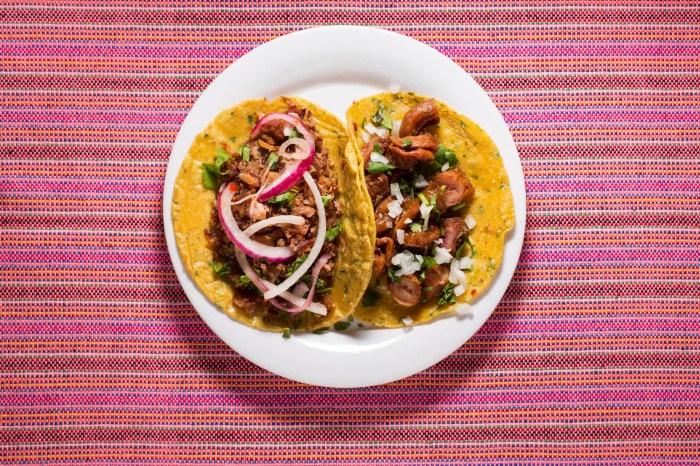
The beauty of Mexican street tacos lies in their diversity. From the classic al pastor to the fiery carnitas, each variety offers a unique blend of flavors and textures. These tacos are not just a culinary experience; they are a reflection of Mexican culture, history, and regional variations.
This section delves into the most popular street taco varieties, exploring their unique ingredients, flavors, and cultural significance.
Popular Street Taco Varieties
Here’s a glimpse into some of the most beloved street taco varieties:
| Taco Variety | Description | Cultural Significance |
|---|---|---|
| Al Pastor | Marinated pork cooked on a vertical spit, sliced thinly, and served with pineapple, onions, cilantro, and a tangy salsa. The marinade typically includes achiote paste, chili powder, and other spices, resulting in a vibrant red color and a smoky, sweet, and savory flavor. | Originating in Mexico City, al pastor tacos represent a fusion of Mexican and Middle Eastern culinary traditions. The use of a vertical spit is inspired by the shawarma technique, and the pineapple is a nod to the Caribbean influence. |
| Carnitas | Slow-cooked pork, often the shoulder or leg, that is braised in lard or oil until it is tender and flavorful. The carnitas are typically shredded and served with onions, cilantro, and salsa. | A traditional Mexican dish, carnitas tacos are often enjoyed during celebrations and special occasions. They are a symbol of family gatherings and communal feasting. |
| Barbacoa | Stewed goat or lamb that is slow-cooked in a pit or oven, traditionally wrapped in maguey leaves. The barbacoa is typically served with onions, cilantro, and salsa. | Barbacoa is a staple dish in many parts of Mexico, particularly in central and southern regions. It is often associated with indigenous traditions and cultural heritage. |
| Suadero | A cut of beef from the brisket or chest, typically cooked until tender and flavorful. The suadero is often sliced thinly and served with onions, cilantro, and salsa. | Suadero tacos are a popular choice in Mexico City and other urban areas. They are known for their rich, savory flavor and their tender texture. |
| Birria | A traditional Mexican stew made with goat, beef, or lamb, typically simmered in a flavorful broth with chiles, onions, garlic, and spices. The birria is often served in tacos, with the broth used as a dipping sauce. | Birria tacos are a relatively recent trend, gaining popularity in recent years. They are known for their bold, savory flavor and their unique dipping broth. |
| Pescado | Fish tacos are a popular choice in coastal regions of Mexico. The fish is typically grilled, fried, or sautéed and served with cabbage, cilantro, salsa, and lime juice. | Pescado tacos reflect the abundance of seafood in coastal areas. They are a delicious and refreshing option, especially during the summer months. |
Accompaniments and Garnishes
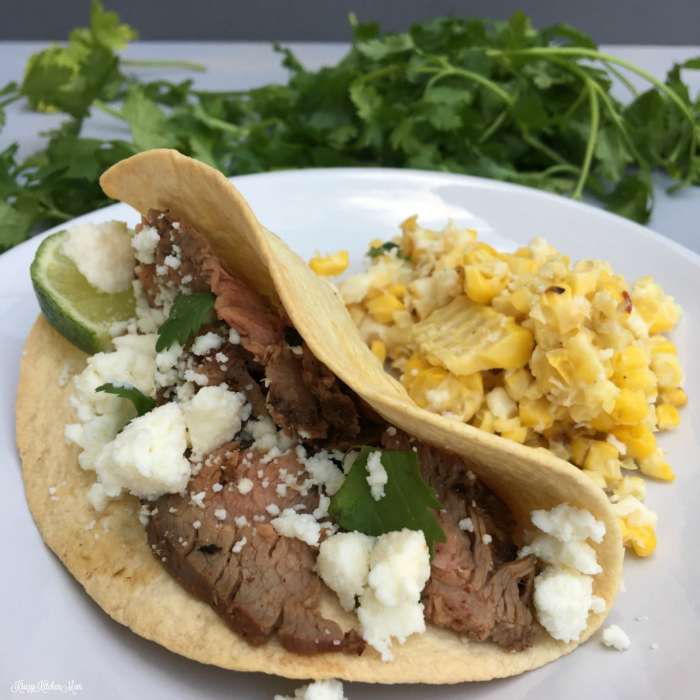
Street tacos are not just about the filling; they are about the symphony of flavors that come together to create a truly unique dining experience. The accompaniments and garnishes play a crucial role in enhancing the flavors and adding textural complexity to these beloved Mexican street food staples.
The Importance of Accompaniments and Garnishes
The accompaniments and garnishes for street tacos are not just additions; they are integral components that elevate the entire experience. They provide a counterpoint to the richness of the fillings, adding freshness, acidity, and heat, creating a balance of flavors that is both satisfying and complex.
Recommended Accompaniments and Garnishes
- Salsa:The foundation of any street taco experience, salsas provide a burst of flavor and heat. Popular choices include salsa roja (red salsa), made with tomatoes, chiles, and spices, and salsa verde (green salsa), made with tomatillos, chiles, and cilantro.
These salsas are typically served alongside the tacos, allowing diners to customize their heat level according to their preference.
- Lime Wedges:A simple yet essential accompaniment, lime wedges provide a refreshing acidity that cuts through the richness of the meat and cheese. The juice of the lime can be squeezed directly onto the taco, adding a vibrant citrus flavor.
- Cilantro:This aromatic herb adds a fresh, herbaceous flavor that complements the savory notes of the fillings. Cilantro is typically chopped and sprinkled over the tacos, adding a bright and vibrant element to the overall taste.
- Onion:Whether chopped white onion or thinly sliced red onion, onions provide a sharp and tangy flavor that adds a nice contrast to the richness of the fillings. The crisp texture of the onions also adds a welcome textural element.
- Radish:Thinly sliced radishes add a peppery bite and a refreshing crunch to the tacos. They are often served alongside the tacos, allowing diners to customize their taste and texture preferences.
- Pickled Onions:Pickled onions, often marinated in vinegar and spices, offer a tangy and slightly sweet flavor that adds complexity to the tacos. The crunchy texture of the pickled onions also provides a nice contrast to the softer fillings.
- Queso Fresco:This crumbly fresh cheese adds a salty and tangy flavor that complements the savory fillings. Queso fresco is often sprinkled over the tacos, adding a creamy and salty element to the overall taste.
- Crema:A creamy and slightly tangy Mexican sour cream, crema adds a rich and decadent element to the tacos. It is often drizzled over the tacos, providing a smooth and creamy texture that balances the other flavors.
- Avocado:Sliced or diced avocado adds a creamy and buttery flavor that complements the richness of the fillings. Avocado also provides a healthy dose of fats and vitamins, making it a nutritious addition to the tacos.
- Hot Sauce:While not always included as a standard accompaniment, hot sauce is a popular addition for those who enjoy a spicy kick. Many different types of hot sauce are available, ranging from mild to extremely hot, allowing diners to customize their heat level according to their preference.
Street Taco Culture and Experience: Traditional Mexican Street Tacos
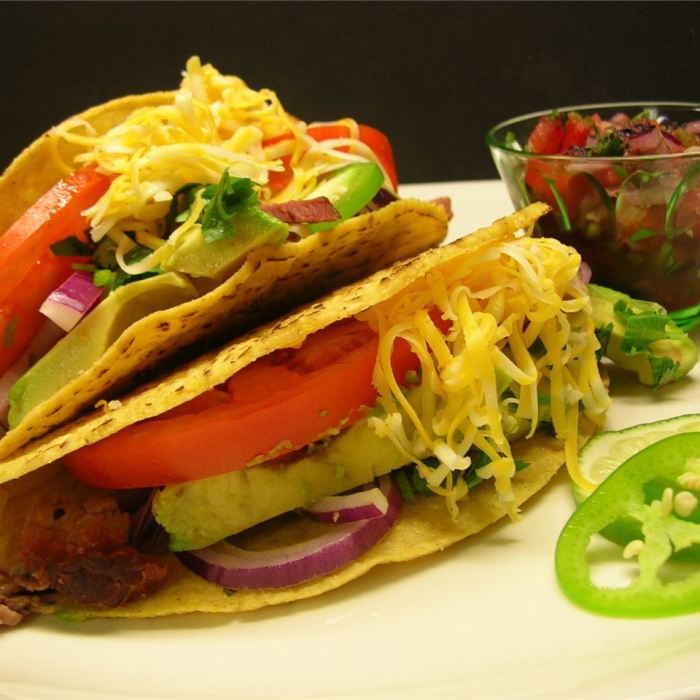
The vibrant street food culture surrounding traditional Mexican street tacos is a testament to the country’s rich culinary heritage and its deep-rooted social connections. It’s not just about the food; it’s about the experience, the interaction, and the sense of community that these humble street vendors cultivate.
The Social and Cultural Significance of Street Food Vendors
Street food vendors play a crucial role in Mexican society, often serving as the heart of their communities. They provide affordable and delicious meals for people from all walks of life, fostering a sense of shared experience and connection. The vibrant atmosphere of a street taco stand, with its aroma of sizzling meat and lively chatter, is a magnet for locals and tourists alike.
- Economic Backbone:Street food vendors provide a livelihood for many, often offering a flexible and accessible way to earn income, particularly for those who may not have access to traditional employment opportunities.
- Social Hubs:Street taco stands serve as gathering places for friends, families, and neighbors. They offer a space for informal social interaction, creating a sense of community and belonging.
- Cultural Preservation:Street food vendors play a vital role in preserving traditional Mexican culinary practices. They pass down recipes and techniques from generation to generation, ensuring that these flavors remain an integral part of Mexican culture.
A Personal Anecdote
I remember vividly my first encounter with street tacos in Mexico City. It was a bustling Saturday evening, and the aroma of grilled al pastor wafted through the air, drawing me to a small stand tucked away in a side street.
The vendor, a jovial man with a mischievous twinkle in his eye, greeted me with a warm smile and a hearty “Bienvenidos!” He expertly assembled my tacos, layering succulent meat with fresh cilantro, onions, and a squeeze of lime. Each bite was an explosion of flavor, a symphony of textures and aromas that transported me to a world of culinary delight.
The experience was more than just a meal; it was a cultural immersion, a glimpse into the soul of Mexico. The vendor’s friendly demeanor and the lively chatter of the surrounding crowd created a sense of camaraderie and belonging. It was a reminder that food is not just sustenance but a powerful force that can connect people and create shared memories.

